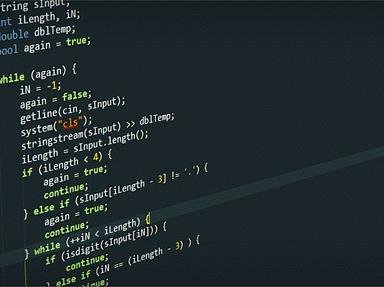Quiz Answer Key and Fun Facts
1. What is an algorithm?
2. Python requires a semicolon at the end of every statement.
3. Which of these is used to display output in Python?
4. What is the maximum integer value that can be represented by a 3-bit unsigned binary number?
5. What is a "tuple" in Python?
6. Which of these is a feature of Python?
7. Which of these is a valid variable name in Python?
8. We use the " // " symbol for adding comments in Python.
9. Which of these is NOT a programming language?
10. True or False: Python is a statically typed language.
Source: Author
The_Rubiks
This quiz was reviewed by FunTrivia editor
WesleyCrusher before going online.
Any errors found in FunTrivia content are routinely corrected through our feedback system.
